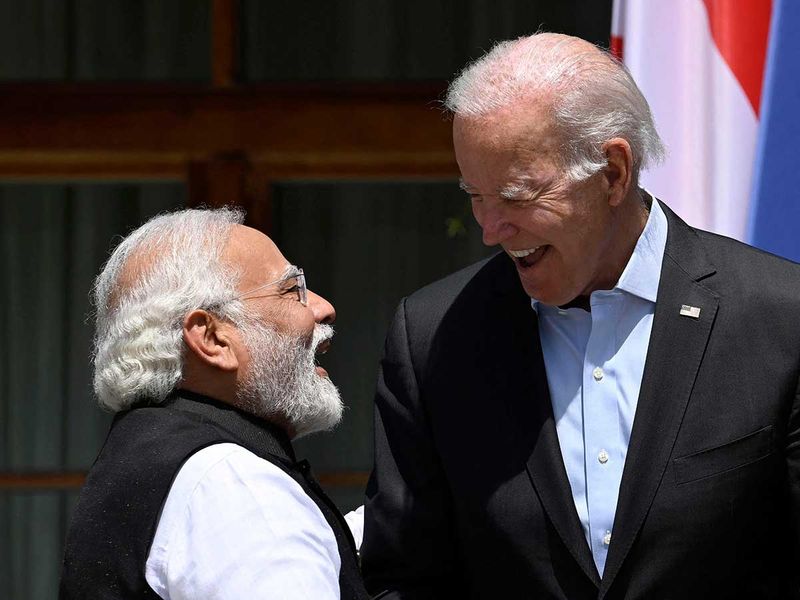Indian Prime Minister Narendra Modi is scheduled to visit Washington, D.C. from June 21 to June 24, 2023 for his first official state visit during the Biden administration.
This visit is a golden opportunity for the two leaders to reaffirm the deep and close partnership between India and the United States, as also to advance various areas of mutual interest and cooperation. Though Modi went to the US several times in the past, having also addressed the Congress in 2016, this will be his first state visit.
Why is that important? In terms of protocol, this is the highest level at which a leader from a foreign country is invited to the US. There is a lot of pomp and pageantry associated with such a visit, including a 21-gun salute and a formal dinner in which the visiting leader’s spouse is also invited.
But aside from its ceremonial importance, a state visit marks a very special relationship between the US and the invited country. In India’s case, this is only the third state visit in the last 75 years since India’s independence. President S. Radhakrishnan was invited in June 1963 followed, after nearly half a century, by Prime Minister Manmohan Singh’s state visit in November 2009.
Notable announcements
The visit comes at a time when the US is seeking to counterbalance the growing power of China in the Indo-Pacific region. The US has been keen for India to play a larger role in the Quad, a grouping of four democracies that aims to ensure a free, open, and inclusive Indo-Pacific.
The visit will also allow Modi and Biden to review important economic ties and to explore ways to expand and consolidate Indo-US relations in the broadest possible manner. Many notable announcements are expected, especially when it comes to the transfer of technology, including enabling India to produce high-powered jet engines and sophisticated defence equipment.
Modi and Biden will cover other aspects of the bilateral relationship, such as technology, trade, industry, education, research, clean energy, defence, security, healthcare and people-to-people connections. India and the US have a strong and growing partnership in these fields.

The visit will also enable India and the US to coordinate their positions on global issues such as climate change, terrorism, pandemic response, and multilateral cooperation. For instance, they may announce new commitments on reducing greenhouse gas emissions, strengthening counter-terrorism cooperation, supporting the global distribution of vaccines, or reforming the United Nations.
One of the key aspects of Modi's visit will be the defence and security cooperation between India and the US. The two countries are likely to sign several defence deals worth billions of dollars, including the purchase of 30 Predator drones for the Indian Navy and Army, the co-development of a new generation fighter jet under the Defence Technology and Trade Initiative (DTTI), and the transfer of critical technologies for India's indigenous aircraft carrier project.
The defence deals will enhance India's military capabilities and strengthen its role as a net security provider in the Indo-Pacific region. India is already set to buy a huge number of jetliners from the US in the coming years.
Military and political alliance
In addition, the US has made overtures to India to join the NATO plus alliance, something India has been reluctant to acquiesce to. The North Atlantic Treaty Organisation comprises of 31 member states, mostly from Europe.
It is a military and political intergovernmental alliance between democratic countries formed to counter the Soviet Union and its allies during the Cold War. Lately, the US has also formed a NATO Plus configuration, which includes allies such as Australia, Japan, New Zealand, Israel, and South Korea.
Even if India is reluctant to join NATO plus, given our history of independent foreign relations and non-alignment, not to mention close, historic ties with Russia, there is nothing to prevent India from entering into a bi-lateral strategic treaty with the US. US is already sharing critical intelligence with India on our borders with China.
Has the time come to cement the ties between the two largest democracies with a comprehensive bilateral treaty covering security, technology, and trade? In my view, the answer is clearly yes.
In an earlier column in Open magazine published on April 30, 2021, I had argued that India missed the bus in the early years after independence, especially because of Indian Prime Minister Jawaharlal Nehru’s distrust of the West given his socialistic proclivities.
Key to a democratic Asia
Even before he became the president of the US, John F. Kennedy, in a remarkable article in Le Monde published in May 1958, enticingly entitled “Future of Democracy in India,” had made a far-reaching proposal for an Indo-US partnership. After the bold opening declaration, “India is the key to a democratic Asia,” he had advocated a comprehensive US plan for India’s economic development.
Comparing the two Asian giants, China and India, Kennedy praised the latter for its two General Elections and its struggles to stabilise its society after the trauma of Partition. He also worried that “If India falls prey to internal disorder and the disappointment of its masses or its leaders, if it is absorbed into the communist system, the free world will suffer an incalculable setback.”
Kennedy offered to industrialise India on the lines of the Marshall Plan that resurrected Europe after World War II. Of course, India, with a mistakenly self-righteous leaning towards China in those days, had spurned that golden opportunity.
We should not make the same mistake again, especially when the US is perceived as needing us as an ally and partner. With a very strong, prosperous, and politically powerful Indian diaspora in the US, the prospects of a lasting partnership between the two countries have never been brighter. With the US as India’s largest trading partner, it is time to cement our ties to secure the future of planet.
Without selling itself cheap, India should seize this moment to forge a permanent partnership based on mutual interests, democratic values, global security, and world peace.









